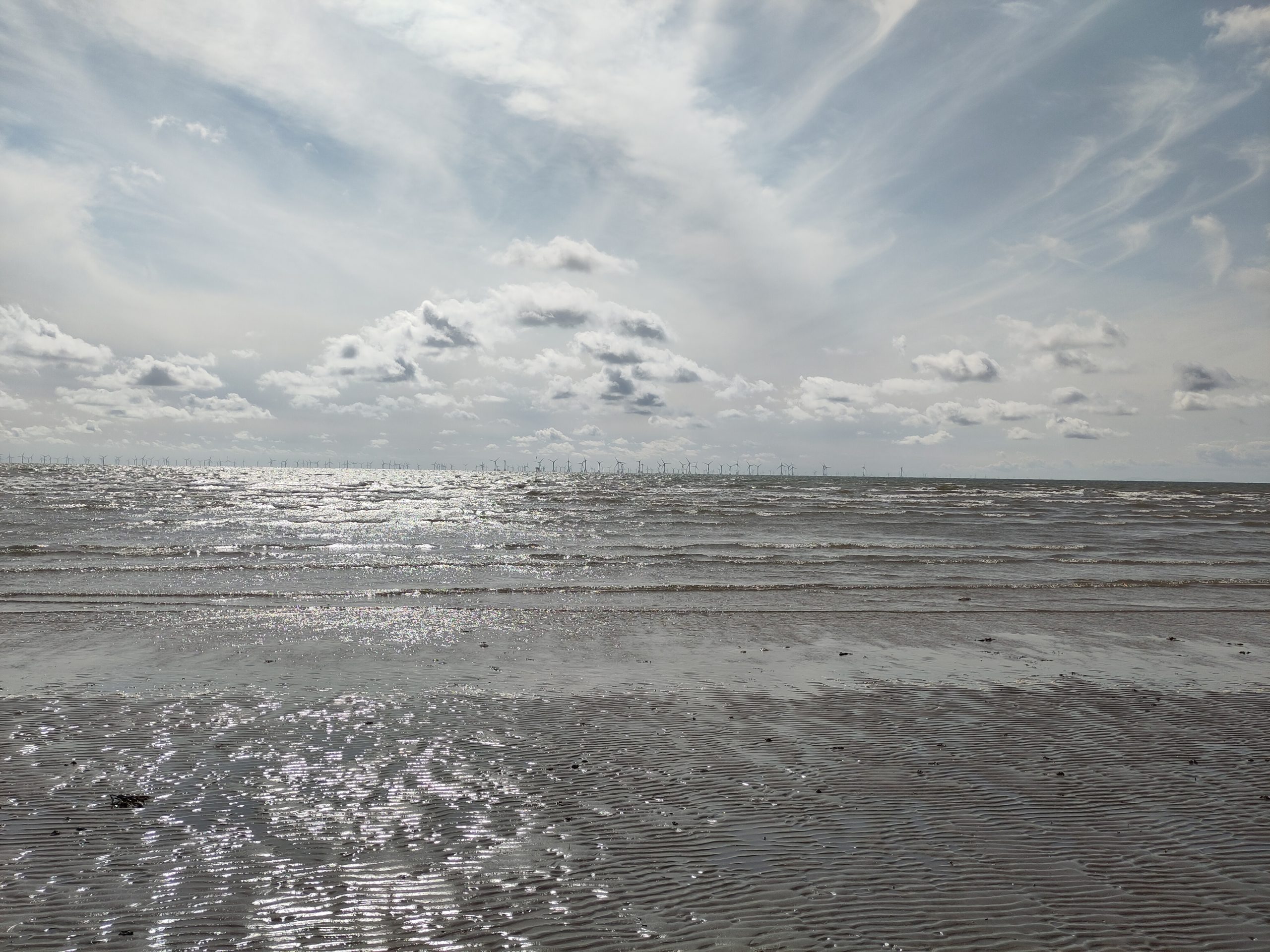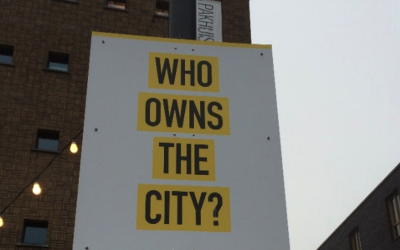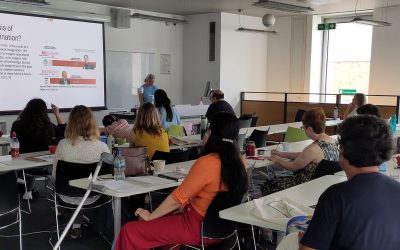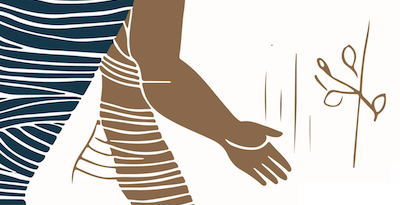Join us for the Cemore Summer Symposium 2025!
Please register here for tickets for online and in person attendance: https://cemore_summer_symposium.eventbrite.co.uk
An opportunity to get together with mobilities researchers from Lancaster and further afield, to share our research, celebrate success, and maybe spark some new collaborations.
We look forward to welcoming guest mobilities researchers Lucia Quaquarelli and Adrien Frenay from Université Paris Nanterre, France; Jason Finch, Åbo Akademi University, Finland; and Kate Moles, Cardiff University, UK.
If you can’t make it to Lancaster please join us online to hear this exciting range of quick fire presentations sharing new mobilities reserch!
Symposium Schedule
Charles Carter Building, Room A15, Lancaster University.
12 – 1pm Sandwich Lunch
1pm Welcome – Jen Southern
1.10 Panel
Lucia Quaquarelli and Adrien Frenay (Université Paris Nanterre, France)
Shaping space in literary mobilities. “Espace, Déplacement, Mobilité”: inter-weaving narratives, space, and place from the perspective of mobility. A CRPM’s Research Project
Jason Finch (Åbo Akademi University, Finland)
Musical Railway Representations via Mobile Methods: Louis Jordan, James Brown, and YouTube
Kate Moles (Cardiff University, UK)
Swimming in Compromised Times and Places
2pm 7 x 5 minute presentations
Lynne Pearce: The Road that Keeps on Giving
Muren Zhang: Driving into the Impasse: Affective Adjustment and Backward Hope in Never Let Me Go (East China Normal University)
David Tyfield: A Chinese-inspired Civilisational Turn: E-Mobility’s Uneven Remaking of Space-Time and Beyond
Gerry Davies & Sait Toprak: Migrations, a mail art exhibition
Giovanni Bettini: Climate Borderscapes – borders, (im)mobilization and justice in the climate emergency
Bruce Bennett, Maryam Ghorbankarimi, Emma Rose: Site-seeing: making films with refugees
Nicola Spurling: Follow the Auto/biography
2.50 short break with tea/coffee
3.10pm 7 x 5 minute presentations
Monika Buscher: Changing Mobilities
Colin Pooley: Approaches to the study of past virtual mobility
Artist A & Artist B: Hauling with Intent
Xiao Geng: The Writing of Plant Mobility in 20th-Century British Literature
Rodanthi Tzanelli: Environmental imaginaria in the age of extinction: three biostyles of radical mobility
Serena Pollastri, Suzana Ilic : Doing research with water and sands: reflections on engaging with the fluidity of coastal environments.
Jen Southern: More-than-human mobilities and infrastructures
Abstracts
1pm Panel
Lucia Quaquarelli, Adrien Frenay
Université Paris Nanterre
Shaping space in literary mobilities. “Espace, Déplacement, Mobilité”: inter-weaving narratives, space, and place from the perspective of mobility. A CRPM’s Research Project
The presentation will introduce the international project «Espace, déplacement, mobilité», supported by the research centre CRPM-Centre de Recherches Pluridisciplinaires et Multilingues at the University Paris Nanterre, which aims to explore the relationship between space (urban and non-urban) and narratives through a transdisciplinary approach and from a mobility perspective. Two ongoing research strands within the project will then be presented: one focusing on a recent Italian literary corpus of « narrazioni mobili » and the other dealing with mobilities as literary tools and functions in the 19th century French novel.
Jason Finch
Åbo Akademi University, Finland
Musical Railway Representations via Mobile Methods: Louis Jordan, James Brown, and YouTube
Heard on the move via a smart phone, music originally recorded in the mid-twentieth century can be reinterpreted in novel ways that contain elements of co-production. My talk examines this activity using research frameworks drawn from mobility humanities, urban cultural studies and the history of media. In a recent conference paper developed as part of the ongoing research project ‘Twentieth-Century Railway Imaginations: Building the Mobility and Infrastructural Humanities’ (RAILIMAGE), I considered the media and technological landscape of the period from the end of the Second World War until the mid-1960s, when this music was created and within which it was first consumed. In that environment, the dominant recording medium was the vinyl record. Popular music then was consumed at home using physical recordings such as records playing at 78, 45 and 33⅓ rpm, but also, through the juke box, in public places, as well as being heard perhaps more than in any other way over the airwaves via the radio. At the end of the period, in the United States, television in particular markets and as syndicated coast to coast becomes a factor. While the earlier paper concentrated on two pieces of music, ‘Choo Choo Ch’Boogie’ and ‘Night Train’, using critical infrastructure studies to put them into dialogue with the crisis of passenger rail which America experienced during the postwar decades, my talk in Lancaster will instead consider media production and consumption in the broadcast era (1940s–1970s) alongside the methodological and social affordances of current (2020s) technology.
Kate Moles
Cardiff University, UK
Swimming in Compromised Times and Places
Abstract: Water allows us to think about and with mobility; it ebbs and flows, runs and seeps, collects and disperses, evaporates and pools, erodes and deposits. Access to water – to drink, for sanitation, and for leisure – offers ways to see social inequalities and to think about interconnections, vulnerability and complexities. More specifically, water moves us to consider environmental and non-human assemblages and swimming, as a method and as a social practice, provides insight into how movement, and blocked movement, invites us to think about the world today and the world becoming. Swimmers immerse themselves in polluted, risky, grey, brown, green waters as well as the blue idyllic that is often portrayed. Making sense of their practice and their accounts of where they swim and why, allows us to consider how we might go about swimming ethically in shifting and compromised times and places.
2pm 7 x 5 minute Presentations
Lynne Pearce
Department of English Literature and Creative Writing, Cemore Co-Director, Lancaster University.
The Road that Keeps on Giving
Even the most mundane of roads, and roadscapes, delivers a wealth of knowledge aside from the ‘system of automobility’ (Dennis and Urry 2009) in which it is enmeshed. The linear space of the road – and the fact it is often (though not invariably) apprehended from a moving vehicle and at speed — gives rise to transient and hence unique configurations of human and non-human forces. These afford novel insights into how, inter alia, road-users of different kinds orient themselves in space and time (including memory) via idiosyncratic landmarks, form powerful but paradoxical attachments to vanishing places, and participate in the production of everyday kin/aesthetics. Most importantly of all, the road demonstrates how change manifests itself in familiar and notionally unremarkable environments as well as the mechanisms by which change becomes visible. This is a snapshot of some of the topics addressed in my forthcoming book — Britain’s Changing Roadscapes: Mobility, Place, Attachment, Loss — which I shall expand upon in this brief presentation, together with some signposts to where my road research is heading next: for example, a case-study capturing how roads — and the experience of driving them — are dramatically impacted upon by weather, including the consequence of climate change.
Muren Zhang
East China Normal University
Driving into the Impasse: Affective Adjustment and Backward Hope in Never Let Me Go
In Kazuo Ishiguro’s Never Let Me Go (2005), driving does not mark the possibility of freedom or forward movement. Kathy’s driving, often unmoored from destination or urgency, enacts a form of affective adjustment rather than escape. What unfolds is not a linear progression, but a spatial and temporal impasse – movement that suspends transformation while sustaining attachment to what has already been lost. Mobility in this context does not open the future; it manages the present. Drawing on Lauren Berlant’s account of impasse and Heather Love’s concept of backward hope, I read this mode of mobility as part of the novel’s affective biopolitical logic: not a refusal of the system, but a technique of staying within it.
Dr Muren Zhang is Associate Professor of English Literature at East China Normal University. Her research interests include affect theory, mobility studies and contemporary British Literature and Culture. She is the author of Neo-Victorianism, Empathy and Reading (Bloomsbury, 2022).
David Tyfield
Lancaster Environment Centre, Cemore Associate Director, Lancaster University
A Chinese-inspired Civilisational Turn: E-Mobility’s Uneven Remaking of Space-Time and Beyond
Gerry Davies & Sait Toprak
Lancaster Institute for Contemporary Arts, Lancaster University / Dokuz Eylül University, Izmir, Turkey
Migrations, a mail art exhibition
The exhibition invited artists to respond to the following theme, submitted by post in 2025: Movement and mobility are features of developed organisms, they are also means by which creatures, including we, orientate ourselves in and across the world. Today people and populations shift and change location for opportunity or leave under pressure. Archaeology tells us that pre-history saw radiating flows from Africa toward new lives East and West. And our futures will be rich with new Migration. While there remain few migratory peoples today, the migratory movement of critters, of birds, land animals and sea creatures continue. Migrations mysterious and essential, large and small: wildebeest move for pasture, zooplankton up for food and down for safety, but sand dunes migrating, who knew? Artists are migrants. We live, move, work, communicate and trade within flows of migrating information. Geographically and digitally our ideas and work travel. In the street, on the kitchen table or a screen, in the studio or workshop, we encounter each other. You are coming the other way with something new; I take it up, pass it on. Whether actual or virtual, migrants exchange, collaborate and offer aid, ideas and support through shared mobility and movement. We offer the idea of Migrations freely and in the plural. Interpret it as human, animal, mineral, biological, geographic, gendered, geologic, spiritual or cultural. The effect might be close or far, the scale, visibility and impact global, local or microscopic.
Giovanni Bettini
Lancaster Environment Centre, Cemore Associate Director, Lancaster University.
Climate Borderscapes – borders, (im)mobilization and justice in the climate emergency
This intervention introduces the notion of ‘climate borderscapes’, which brings work on borderscapes (Mezzadra and Neilson 2013, Brambilla and Jones 2019, Krichker 2021, Peña 2023) into dialogue with the emerging climate mobilities framework (Boas et al 2022). The concept of climate borderscapes recasts the focus of debates on climate migration away from the spectre of a feared ‘climate exodus’. Instead, it foregrounds more pressing questions on how climate change may intersect with current processes of borderization (Mbembe 2019) and expulsion (Sassen). The risk is an intensification of forms of forced mobilisation and immobilization – often mirroring racialised lines – to which growing segments of the Majority World are exposed. The notion of climate borderscapes offers insights into the territorialization of sovereignty, borders, justice, and political subjectivities amidst the ongoing climate emergency, opening space to challenge dominant regimes and proposing alternative visions.
Bruce Bennett, Maryam Ghorbankarimi, Emma Rose
Lancaster Institute for Contemporary Arts, Lancaster University.
Site-seeing: making films with refugees
This presentation discusses a film-making course we ran in Spring 2023 and then again in 2024 for asylum seekers residing in the local area. Working in groups under our supervision, the participants devised, shot and edited a set of short films, and at the end of the course they presented their films on stage at the local independent cinema to a public audience.
Many of the participants had been transported to temporary housing in Lancaster and Morecambe in Northwest England through the Home Office National Dispersal Scheme while their asylum claims were being processed, some only a few weeks previously, and so one of the functions of this course was to allow them to investigate their new home (however temporary it would prove to be).
In this presentation we outline the principles behind the design of this participatory project, discuss the work produced by the filmmakers, and reflect upon its effectiveness.
Nicola Spurling
Sociology Department, Cemore Associate Director, Lancaster University.
Follow the Auto/biography
3pm 7 x 5 minute Presentations
Monika Buscher
Emeritus Professor, Sociology Department & Cemore, Lancaster University
Changing Mobilities
Why is it so hard to change mobility systems even as natural, political, and social systems are collapsing? What can we do? These questions are at the heart of a book I have co-authored with Greg Marsden, due out in 2025. In this presentation I give a glimpse of our research and conclusions. Many analysts suggest a crisis of imagination, and it can, indeed, seem easier to imagine the end of the world than the end of capitalism. But we find that there is nothing natural about this, it is a crisis manufactured by powerful people and interests. Part of their strategy is suppression of a vibrant world where alternative mobilities are not just imagined but made real against huge odds. We argue that mobile methods can help infrastructure resistance and allow these alternatives to take hold and spread.
Colin Pooley
Emeritus Professor, Lancaster Environment Centre & Cemore, Lancaster University
Approaches to the study of past virtual mobility.
Virtual mobility is usually associated with the internet age and the rise of social media. It is a term often applied to distance learning, but can also apply to any media through which people make connections and learn about distant places. My research has been using a large collection of letters written by a young lady in Toronto to her pen friend in north Lancashire. They began corresponding in 1946 and continued until 2013. Pen pal correspondence was common in the mid-twentieth century and the Toronto correspondents wrote to at least 40 different pen pals scattered all over the globe. Through these she made connections, swapped personal information and learned about distant places and cultures. Letters were not the only way in which virtual mobility took place in the past, but I argue that they could provide a dense network of interaction long before the internet age.
Artist A & Artist B
University of Central Lancashire / Independent Artist
Artist A & Artist B: Hauling with Intent
‘Artist A & Artist B’ is the collaborative name for Dr Jackie Haynes and Dr Heather Mullender-Ross. Since 2020 they have developed a series of multimedia, performance-based and mobilised artforms under the project title ‘Statement of Intent’. Their respective art practice-based PhDs focussed on the German Dada artist, Kurt Schwitters, and the wider legacy and contemporary relevance of Merz, Dada and Fluxus. They are currently working on a 7” vinyl recording of shanty songs reflecting on their project (A-Side) and the working terms and conditions of the contemporary artist (B-Side). The forthcoming songs, accompanying exhibition and live event will inform a co-written book chapter fuelled by the creative exchanges and collaborative strategies of Raoul Hausmann and Kurt Schwitters, during their period of enforced exile. Both Statement of Intent and the book chapter seek to illuminate the work of both sets of collaborators by asking, what forms of art practice can articulate ideas arising from persistence, non-fixity and the pooling of skills and ideas?
Xiao Geng
College of Foreign Languages, South-Central Minzu University
Visiting Professor, Faculty of English, University of Cambridge
The Writing of Plant Mobility in 20th-Century British Literature
This paper explores the concept of botanical mobility in British literature, examining how plants—both literal and symbolic—traverse geographical, cultural, and metaphorical boundaries across key literary works. Focusing on texts from the Romantic era to postcolonial narratives, the study analyzes how authors such as John Keats, D. H. Lawrence and Virginia Woolf, etc employ botanical imagery to interrogate themes of colonialism, ecological interconnectedness, and human displacement. By tracing the movement of plants as symbols of migration, hybridity, and resilience, the essay reveals how flora in literature often mirrors socio-political dynamics. Drawing on ecocritical and postcolonial frameworks, the paper argues that botanical mobility serves as a narrative device to critique power structures and envision ecological solidarity. Ultimately, it contends that British literature’s engagement with plant life transcends mere pastoral aesthetics, offering a radical reimagining of nature’s role in shaping identity and resistance.
Rodanthi Tzanelli
School of Sociology & Social Policy, University of Leeds, UK
Environmental imaginaria in the age of extinction: three biostyles of radical mobility
Abstract: Environmental imaginaria is my own umbrella term, as featured in my last monograph, which explored different schools of critical thought, travel style and artistic creativity addressing planetary crises, and especially those triggered by climate catastrophes (Tzanelli, 2025). It refers to multiple sites, physical, virtual and audiovisual, which preserve traces of actual and imagined species and habitats extinct or at risk of extinction. The spectrality of these sites is conducive to imaginaries of loss, ecocide but also hope and hospitality extended to more-than-human life.
Rather than discussing the sites themselves, I focus on three styles of human mobility enacted in and through them, each of them corresponding to the moving subject’s radical habitus: posthuman countertravel (Tzanelli, 2017, 2025), planetary drifting (Szerszynski, 2018), and last-time travel (McGaurr and Lester, 2018). Each of these styles relates to the mobile subject’s attitude towards climate change (catastrophist, gradualist and denialistist – Urry, 2016). Not only each style imprints attitude as their (post-)biopolitical signature, but it also situates them within different arguments in the ‘Critical Zone’ (Latour, 2018).
Serena Pollastri, Suzana Ilic
Lancaster Institute for Contemporary Arts / Lancaster Environment Centre, Lancaster University
Doing research with water and sands: reflections on engaging with the fluidity of coastal environments.
The seashore is an elusive and arguably arbitrary border between sea and the coast: it moves with the rhythms of the tides and through sudden shifts caused by storms, winds, erosion and sediment accretion. In intertidal saltmarshes this border becomes blurred and frayed, as it seeps through the pockets of vegetations that exist in the wet spaces between water and land.
These areas are also site of intricate entanglements between human and non-human animal communities whose lives are affected by water, its movements, and its often-unpredictable effect.
Drawing from the experience gained in a recent project of design and deployment of nature-based solutions in intertidal zones, this contribution reflects on the importance of situated knowledge in coastal areas. Specifically, it argues for incorporating fluidity in research and design methods that fully embrace the dynamic nature of the shore – and resist the temptation to fully rely on computational models and predictions.
Jen Southern
Cemore Director, Lancaster Institute for Contemporary Arts, Lancaster University
More-than-human mobilities and infrastructures
This presentation introduces the mobilities and anchoring of seaweed as a site for study of relational more-than-human mobilities. This research collaboration with Prof. Lynne Pearce focusses on relationships between seaweed archives and seaweed in the wild to explore mobility and infrastructure. I will start by looking at the discoveries of phycologist Kathleen Drew-Baker that led to modern methods of Japanese Nori cultivation. Then, through an introduction made by artist Debbie Yare, I focus on the close observational work of W.B. Kendall found in Barrow Archives. As railway engineer, geologist, and seaweed collector his work offers a useful example to explore connections between surveys, collections and engineering infrastructures.




